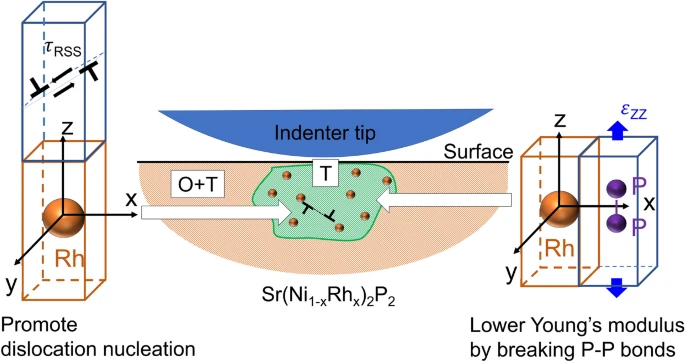Shuyang’s nanoindentation study on SrNi2P2 and its Rhodium doped structure has been published at Journal of Materials Research! Congratulations! Two UConn undergraduate students (Kiera Burns and Aurora Buswell) participated in this research.
Shuyang Xiao, Sarshad Rommel, Kiera A. Burns, Aurora A. Buswell, Vladislav Borisov, Juan Schmidt, Roser Valentí, Paul C. Canfield, Mark Aindow, Seok-Woo Lee, “Effects of Rhodium doping on dislocation nucleation in a [001] SrNi2P2 single crystals under spherical nanoindentaiton,” Journal of Materials Research (2023) [PDF][web] – DOI: https://doi.org/10.1557/s43578-023-01073-y
Abstract: Nanoindentation was performed on SrNi2P2 single crystals and their dilute solid solutions, Sr(Ni1−xRhx)2P2 (x = 0 ~ 0.055), under [001] loading to investigate the effects of elemental doping on Young’s modulus and dislocation nucleation stress. The results show that Young’s modulus and the dislocation nucleation stress decrease as the Rh content increases, and their Rh content dependence also varies with the Rh content. Electron diffraction analysis and the anisotropic lattice distortion calculations revealed that a local structural transition from the orthorhombic superstructure to the tetragonal structure and local compressive residual stresses could be the main reasons for the decrease in Young’s modulus and dislocation nucleation stress, respectively. The overlap of stress–strain fields between Rh atoms and the associated local structural transition contribute to their Rh content dependence. The results also indicate that elemental doping does not necessarily strengthen materials if the incipient plasticity is controlled by dislocation nucleation, unlike conventional solid solution strengthening.
